Dream Weaver |
||||||||||
 |
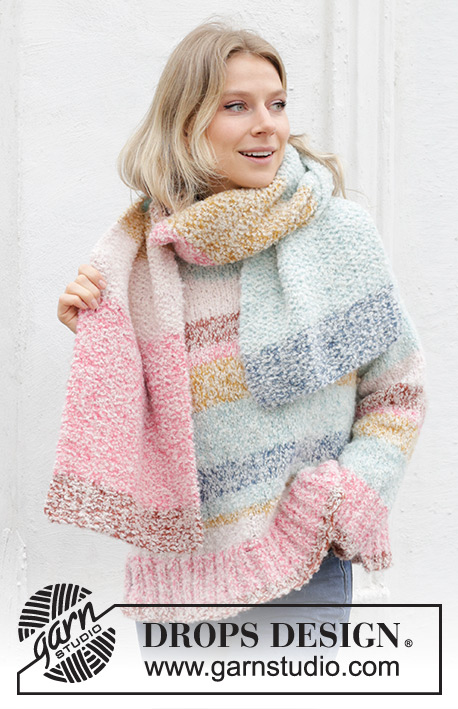 |
|||||||||
Knitted over-sized jumper in DROPS Alpaca Bouclé and DROPS Brushed Alpaca Silk. The piece is worked top down with European/diagonal shoulders, stripes, high neck and split in sides. Sizes XS - XXL.
DROPS 243-34 |
||||||||||
|
------------------------------------------------------- EXPLANATIONS FOR THE PATTERN: ------------------------------------------------------- GARTER STITCH (worked back and forth): Knit all rows. 1 ridge = knit 2 rows. INCREASE TIP FROM THE RIGHT SIDE: Increase towards the left AFTER MARKER: Use left needle to pick up thread between 2 stitches from row below, pick up thread from front and knit stitch in back loop. Increase towards the right BEFORE MARKER: Use left needle to pick up thread between 2 stitches from row below, pick up thread from behind and knit stitch in front loop. INCREASE TIP FROM THE WRONG SIDE: Increase towards the left AFTER MARKER: Use left needle to pick up thread between 2 stitches from row below, pick up thread from behind and purl stitch in front loop. Increase towards the right BEFORE MARKER: Use left needle to pick up thread between 2 stitches from row below, pick up thread from front and purl stitch in back loop. DECREASE TIP (for sleeves): Decrease 1 stitch on either side of the marker-thread as follows: Work until there are 3 stitches left before the marker-thread, knit 2 together, knit 2 (marker-thread sits between these 2 stitches), slip 1 stitch knit-wise, knit 1 and pass the slipped stitch over the knitted stitch (2 stitches decreased). STRIPES – SHORT INFO: The whole garment is worked with 1 strand DROPS Alpaca Bouclé and 1 strand DROPS Brushed Alpaca Silk (2 strands). Only DROPS Brushed Alpaca Silk changes colour when working the stripes (which are worked in stocking stitch). STRIPES BACK/FRONT PIECES: 6 cm with colour powder pink. 4 cm with colour rust. STRIPES BODY: 2 cm with colour hot pink. 5 cm with colour curry. 7-7-8-8-9-9 cm with colour light sea green. 4 cm with colour steel blue. 3-3-3-4-4-4 cm with colour light sea green. 2 cm with colour curry. 4-5-5-5-5-6 cm or to desired length, with colour powder pink. STRIPES SLEEVES: 6 cm with colour powder pink. 4 cm with colour rust. 2 cm with colour hot pink. 5 cm with colour curry. 9-8-8-8-7-7 cm or to desired length, with colour light sea green. KNITTING TIP (fastening strands): When changing to a new colour as the stripes are worked, stop when there are 8 stitches left before the new stripe. Cut the DROPS Brushed Alpaca Silk strand approx. 10-12 cm from the work, tie this end together with the new colour-strand (approx. 7-8 cm end on the strand that was cut so that there are 2 strand ends approx. 7-8 cm), split the strand ends and work the last stitches with 2 strands in the colors you have just knitted with, after the knot you work the next stitches with 2 strands in the next stripe color (the strand ends will now be worked in) . Do this every time you change colours, changing colours on alternate sides of the piece. ------------------------------------------------------- START THE PIECE HERE: ------------------------------------------------------- JUMPER - SHORT OVERVIEW OF THE PIECE: The jumper is worked in stocking stitch and stripes with 1 strand of each quality. The top of the back piece is worked back and forth on circular needle from the top down until the armholes are finished. Stitches are knitted up for the front piece along each shoulder on the back piece and increased for the neck. The front piece is worked back and forth until the armholes are finished. The front and back pieces are joined and the body continued in the round on circular needle before being divided for the split in each side. Stitches are knitted up around each armhole. The sleeve cap is worked back and forth then the rest of the sleeves are worked in the round with double pointed needles/small circular needle. The neck is worked in the round to finish. BACK PIECE: Cast on 22-24-24-26-26-26 stitches with circular needle size 7 mm, 1 strand DROPS Alpaca Bouclé and 1 strand DROPS Brushed Alpaca Silk colour light sea green (2 strands). Purl 1 row from the wrong side. Insert a marker inside the 3 outermost stitches on each side. The markers must be inside the outermost 3 stitches on each row. Work stocking stitch back and forth. AT THE SAME TIME increase AFTER the marker at the beginning of the row from the right side and BEFORE the marker at the end of the row – read INCREASE TIP FROM RIGHT SIDE. On the next row (wrong side) increase in the same way – read INCREASE TIP FROM WRONG SIDE. Continue increasing from both the right and wrong side a total of 19-21-23-24-26-28 times. REMEMBER THE KNITTING TENSION! After the last increase there are 60-66-70-74-78-82 stitches. Work 2 rows without increasing. Insert a marker in the outermost stitch on each side, the piece is now measured from here! Continue working for 4-5-5-6-7-8 cm, measured along the armhole from the marker (the piece measures approx. 16-18-19-21-23-26 cm from the cast-on edge mid-back). Read KNITTING TIP and work STRIPES BACK/FRONT PIECES (and read SHORT INFO above). When the stripes are finished and the next row is from the right side, the piece measures approx. 14-15-15-16-17-18 cm from the marker – measured along the armhole. Cut the strands, place the stitches on a thread or another needle and work the front piece. FRONT PIECE: Start on the left shoulder (when the garment is worn). Use 1 strand DROPS Alpaca Bouclé and 1 strand DROPS Brushed Alpaca Silk colour light sea green (2 strands), Knit up 19-21-23-24-26-28 stitches inside 1 stitch along the shoulder on the back piece (1 stitch in each row along the shoulder). Work stocking stitch back and forth. When the piece measures 5-6-7-8-9-9 cm, increase for the neck at the beginning of each row from the right side, after the first 3 stitches - remember INCREASE TIP FROM RIGHT SIDE. Increase 1 stitch 4 times = 23-25-27-28-30-32 stitches. After the last increase, work back from the wrong side. Cut the strand, place the stitches on a thread or another needle and work the right shoulder as described below. Use 1 strand DROPS Alpaca Bouclé and 1 strand DROPS Brushed Alpaca Silk colour light sea green (2 strands), Knit up 19-21-23-24-26-28 stitches inside 1 stitch along the right back shoulder. Work stocking stitch back and forth. When the piece measures 5-6-7-8-9-9 cm, increase for the neck at the end of each row from the right side, before the last 3 stitches - remember INCREASE TIP FROM RIGHT SIDE. Increase 1 stitch 4 times = 23-25-27-28-30-32 stitches. After the last increase, work back from the wrong side. Work the next row as follows from the right side: Stocking stitch over the 23-25-27-28-30-32 stitches on the right shoulder, cast on 14-16-16-18-18-18 stitches for the neck, stocking stitch over the 23-25-27-28-30-32 stitches from the left shoulder = 60-66-70-74-78-82 stitches. Work stocking stitch until the piece measures 14-15-17-18-19-20 cm. Remember KNITTING TIP and work STRIPES BACK/FRONT PIECES. When the stripes are finished and the next row is from the right side, the piece measures approx. 24-25-27-28-29-30 cm from the knitted up stitches – measured along the armhole. The front and back pieces are now joined for the body. BODY: Change to 1 strand DROPS Alpaca Bouclé and 1 strand DROPS Brushed Alpaca Silk colour hot pink (2 strands). Work stocking stitch over the 60-66-70-74-78-82 stitches on the front piece, cast on 2-2-2-4-6-8 stitches, stocking stitch over the 60-66-70-74-78-82 stitches on the back piece, cast on 2-2-2-4-6-8 stitches = 124-136-144-156-168-180 stitches. Insert 1 marker-thread in the middle of the 2-2-2-4-6-8 cast-on stitches under each sleeve. Allow them to follow your work onwards; they are used when dividing for the split in each side. Work to the first marker-thread – the round starts here. Work STRIPES BODY – read description above (remember KNITTING TIP and SHORT INFO). When the stripes are finished the body measures approx. 27-28-29-30-31-32 cm from the join, with 10 cm left. Now divide for the split in each side and finish each piece separately. FRONT PIECE: = 62-68-72-78-84-90 stitches. Change to circular needle size 5.5 mm, 1 strand DROPS Alpaca Bouclé and 1 strand DROPS Brushed Alpaca Silk colour hot pink. Knit 1 row from the right side and increase 16-18-18-20-22-24 stitches evenly spaced = 78-86-90-98-106-114 stitches. Work next row as follows from the wrong side: 2 GARTER STITCHES – read description above, * purl 2, knit 2 *, work from *-* until there are 4 stitches left, purl 2 and 2 garter stitches. Work this rib back and forth for 8 cm. Change to 1 strand Alpaca Bouclé and 1 strand Brushed Alpaca Silk colour rust. Continue the rib for 2 cm more (10 cm rib in total). Cast off a little loosely. The jumper measures approx. 56-58-60-62-64-66 cm from the top of the shoulder. BACK PIECE: Place the stitches on circular needle size 5.5 mm and work in the same way as the front piece. LEFT SLEEVE: Use circular needle size 7 mm, 1 strand DROPS Alpaca Bouclé and 1 strand DROPS Brushed Alpaca Silk colour light sea green (2 strands). Knit up from the right side 29-30-32-33-35-36 stitches from the bottom of the armhole up the front piece to the shoulder and 17-18-18-19-21-22 stitches from the shoulder down the back piece = 46-48-50-52-56-58 stitches round the armhole. Insert 1 marker in the middle of the row – the sleeve is measured from here. Work stocking stitch back and forth for 1-1-1-2-3-3 cm. Now join the sleeve using short circular needle/double pointed needles size 7 mm and finish the sleeve in the round. Insert 1 marker-thread at the beginning of the round (mid-under sleeve). Allow the thread to follow your work onwards. You now work stripes and decrease under the sleeve. Read the whole section before continuing. Start at the marker thread and work stocking stitch in the round. When the sleeve measures 5-5-5-5-6-6 cm from the marker, decrease 2 stitches mid-under the sleeve – read DECREASE TIP. Decrease every 5-4½-4½-4-2½-2½ cm a total of 6-7-7-7-9-9 times = 34-34-36-38-38-40 stitches. AT THE SAME TIME, when you have worked 10-10-10-9-9-9 cm with colour light sea green, work STRIPES SLEEVES. When the stripes are finished the sleeve measures approx. 35-34-34-32-30-30 cm with 10 cm left. Change to double pointed needles size 5.5 mm, 1 strand Alpaca Bouclé and 1 strand Brushed Alpaca Silk colour hot pink. Knit 1 round and increase 10-10-12-10-10-12 stitches evenly spaced = 44-44-48-48-48-52 stitches. Work rib (knit 2, purl 2) for 8 cm. Change to 1 strand Alpaca Bouclé and 1 strand Brushed Alpaca Silk colour rust. Continue the rib for 2 cm more (10 cm rib in total). Cast off a little loosely. The sleeve measures approx. 46-45-45-44-43-43 cm. RIGHT SLEEVE: Work in the same way as the left sleeve but knit up 17-18-18-19-21-22 stitches from the bottom of the armhole up the back piece to the shoulder and 29-30-32-33-35-36 stitches down the front piece. NECK: Start on one shoulder and knit up, inside 1 edge stitch, 80 to 96 stitches round the neckline with short circular needle size 5.5 mm, 1 strand Alpaca Bouclé and 1 strand Brushed Alpaca Silk colour light sea green (2 strands). Stitch count must be divisible by 4. Work rib in the round (knit 2, purl 2) for 18-18-18-21-21-21 cm. Cast off a little loosely. Fold the neck double to the inside and fasten with a couple of stitches on each shoulder. ASSEMBLY: Sew the bottom of the armholes – see sketch. |
||||||||||
Diagram explanations |
||||||||||
|
||||||||||
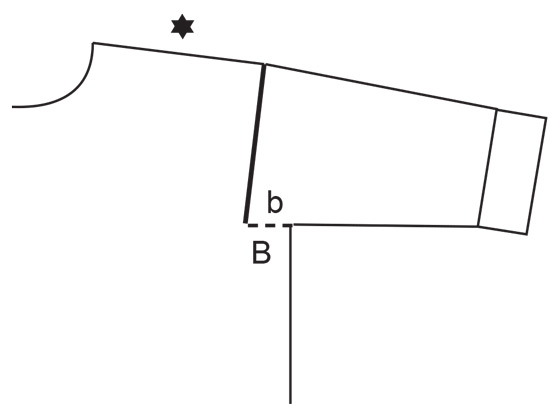
|
||||||||||
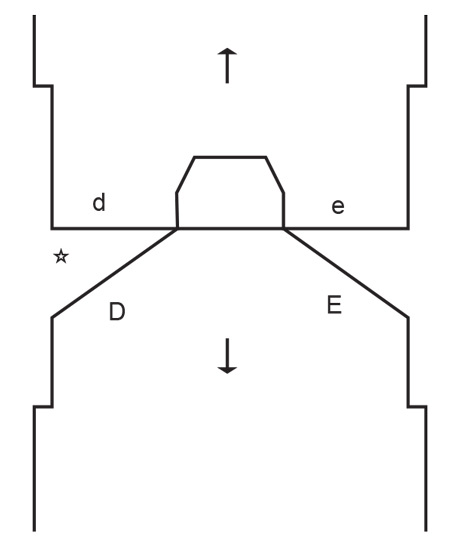
|
||||||||||

|
||||||||||
|
Have you made this or any other of our designs? Tag your pictures in social media with #dropsdesign so we can see them! Do you need help with this pattern?You'll find tutorial videos, a Comments/Questions area and more by visiting the pattern on garnstudio.com. © 1982-2024 DROPS Design A/S. We reserve all rights. This document, including all its sub-sections, has copyrights. Read more about what you can do with our patterns at the bottom of each pattern on our site. |
||||||||||











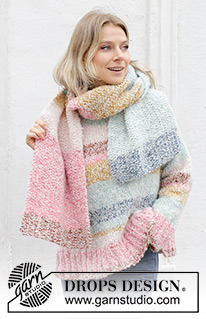
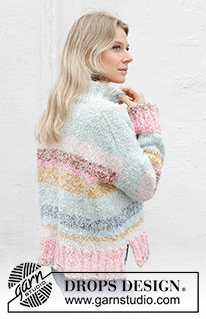





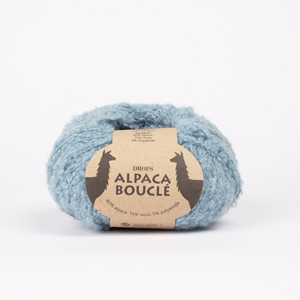
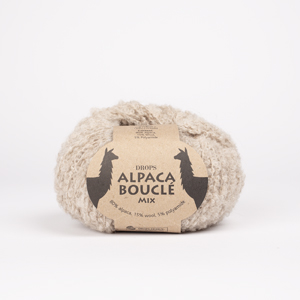





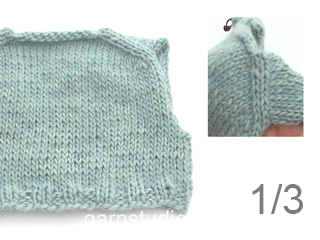
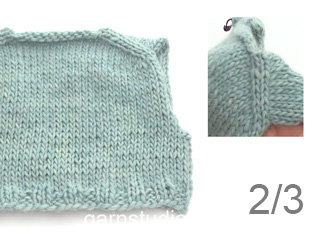
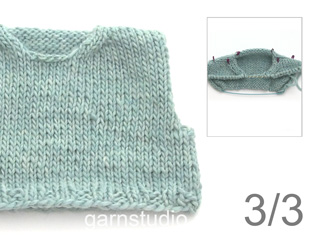


























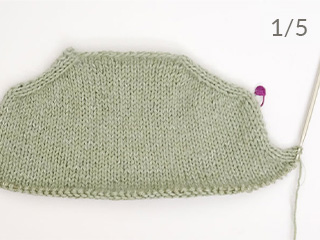
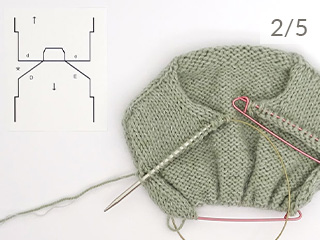
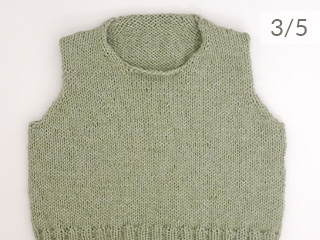

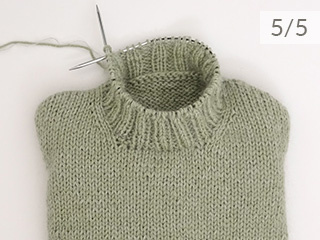





















Comments / Questions (18)
Does this mean you’re releasing more colors of alpaca boucle?
06.08.2023 - 21:05Navn: Free
06.08.2023 - 20:30Rainbow
06.08.2023 - 16:17Pourrais je avoir des explications pour ce modèle svp merci
06.08.2023 - 10:48Winter sun
06.08.2023 - 10:18Frosty
04.08.2023 - 08:52Pull avec plusieurs couleurs coordonnées superbe
04.08.2023 - 07:13Winter spring
04.08.2023 - 07:03Berlingot
03.08.2023 - 19:37Milkshake feast
03.08.2023 - 19:35